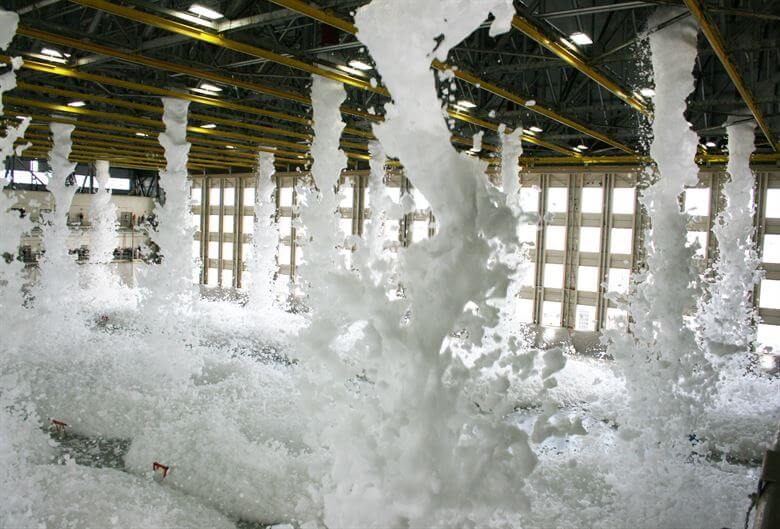There are two types of Foam Flooding Systems
1. Low expansion foam flooding Systems
Low Expansion foam flooding offers a 5:1 expansion rate, making it the foam system of the first choice to protect large and vulnerable facilities to fire, which includes petrochemical tank fields, loading docks, processing blocks, and refineries and liquefied natural gas storage. Companies storing or handling flammable and combustible liquids will usually need to comply with Indian Standards on 'The Storage and Handling of Flammable and Combustible Liquids’ and industry experts can provide the design expertise and system components to help any facility comply with these Standard(s).
2. High expansion foam flooding
With an expansion rate of 500:1, High Expansion foam systems are best fit to protect less common three-dimensional vulnerable facilities including; warehouses, conveyors, aircraft hangars and tunnels. In high expansion, foam is measured by volume output rather than application rate, as is typical of low expansion foams.
High-expansion foam systems can optimize to form concentrate with foam high output foam generators to provide firefighting protection for a multitude of applications such as aircraft hangars; basements; cable tunnels; flammable packaging areas; flammable liquid drum storage areas; hazardous waste facilities; LNG tank farms and loading facilities; mines; roll-paper warehouses; shipboard engine rooms, bilges and holds in shipyard; storage buildings; warehouses; and wildland fire breaks. The light, voluminous foam blanket produced by our high-expansion foam systems can quickly obtain great heights, reaching elevated flammable materials (such as on warehouse racks). The foam cover efficiently transports small amounts of water to the fire, encapsulating the flammable vapors and letting suppression and extinguishment.

